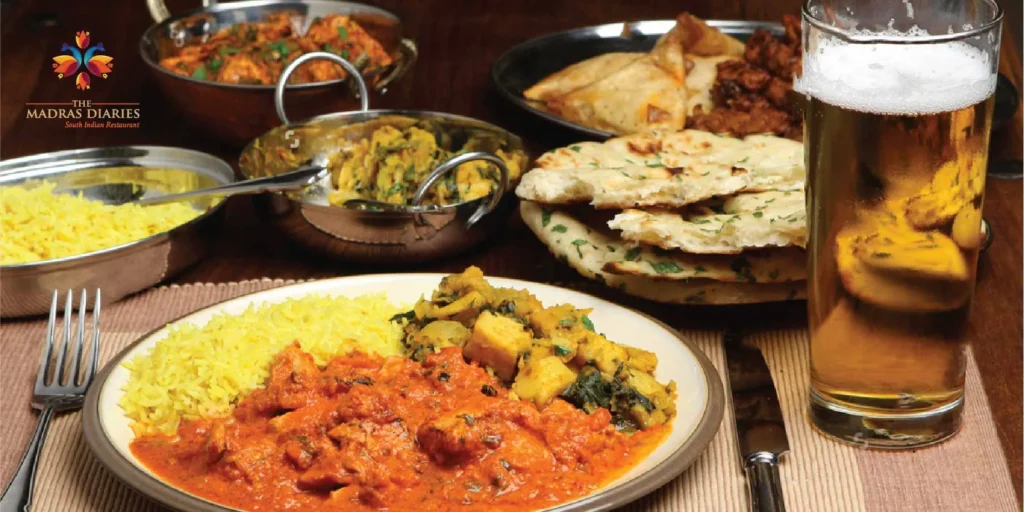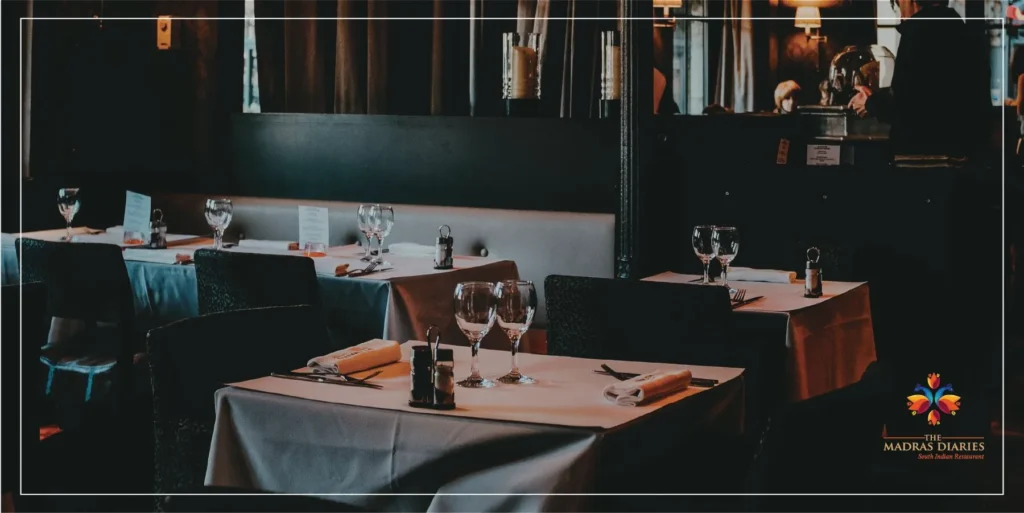From hearty curries to flavorful snacks,
From bold flavours to spicy curries,
From kebabs to aromatic spices,
Indian dishes are simply irresistible.
However, one question that often comes to light is what type of drinks and Indian meals go hand in hand.
While traditional beverages such as lassi, chai, and slurries are always an option, pairing Indian food with beer, wine, or cocktails can take the dining experience to the next level.
While spicy peanuts or “Chakhna” as we call it, is always there to save the day, in this blog, we will explore other best Indian dishes to enjoy with beer, wine, and cocktails.
Beer is the Best!
Beer has undoubtedly become one of the most popular beverages to enjoy with Indian food.
The carbonation in beer complements the spices and helps cut through the dishes’ heat.
While there are many beer options out there, we recommend trying a lager, pilsner, or India pale ale (IPA) with your Indian meal.
1. Samosas
Samosas are a popular Indian snack that is perfect for pairing with beer.
The crispy, deep-fried dough is stuffed with a mixture of spiced potatoes and peas. The contrasting textures of the samosas and the beer make for a delicious combination.
2. Butter Chicken
Butter chicken is a classic Indian dish that pairs well with a light lager.
The sauce’s creaminess is balanced with the crispness of the beer, making it an ideal pairing for those who prefer a milder taste.
3. Lamb Rogan Josh
Lamb Rogan Josh is a spicy lamb curry that pairs well with an IPA.
The bitterness of the hops complements the dish’s heat, enhancing the spices’ flavours.
When it comes to pairing Indian food with beer, there are some key points to keep in mind to achieve the best possible flavour combinations.
- Firstly, it’s important to consider the level of spiciness. Pairing a highly spiced Indian dish with a high-ABV beer can quickly become overwhelming. Therefore, opting for a lighter beer with a lower ABV is best to keep things balanced.
- Secondly, consider the type of beer. Lager, pale ale, and IPA are popular choices for pairing with Indian food.
- Thirdly, a mild beer pairs better with lightly spiced dishes, while a stronger flavoured beer is better suited for bolder, spicier dishes.
- Lastly, consider carbonation. Highly carbonated beers can help cleanse the palate when paired with spicy food.
By keeping these in mind, one can ensure the best possible flavour combinations for a truly unforgettable dining experience.
Wine is the Answer!
Wine might not be the first beverage that comes to mind when thinking about pairing with Indian food, but it can be a great choice for those who prefer wine over beer.
Generally, it is recommended to pair wine with milder dishes to avoid overpowering the flavour of the wine.
1. Kebabs
Kebabs are a type of grilled meat that can vary in spiciness.
For milder kebabs, a Chardonnay would be an excellent choice. For spicier kebabs, a Riesling would pair well with the heat.
2. Saag Paneer
Saag paneer is a vegetarian dish made with spinach and paneer cheese.
The creaminess of the cheese goes well with a lighter red wine such as Pinot Noir.
3. Tandoori Chicken
Tandoori chicken is a popular Indian dish that is marinated in a mixture of yogurt and spices before being grilled.
A light-bodied red wine like a Merlot balances the spiciness of the chicken.
Some points to keep in mind while pairing wine with Indian food:
- Balance the spices: Indian food is well known for its heavy use of spices. Hence, it is important to choose a wine with enough acidity to balance the spicy flavours of the food.
- Choose fruit-forward wines: Wines that have a fruity flavour go well with Indian food by complementing the sweetness in the food.
- Consider the region of the wine: Wines from the same region as the cuisine work well as they share common flavours.
All hail the Cocktail!
Cocktails can be a fun and refreshing way to enjoy an Indian meal.
Spicier dishes can be paired with drinks with a cooling effect, while milder dishes can be paired with more sweet and flavorful cocktails.
1. Aloo Tikki
Aloo Tikki is a popular Indian street food made with mashed potatoes and various spices.
This dish pairs well with a refreshing cocktail like a mojito, which cleanses the palate and cools the spiciness.
2. Fish Curry
Fish curry is a spicy dish that can be paired with a sweet cocktail like a mango margarita.
The cocktail’s sweetness balances the curry’s heat, allowing the spices’ flavours to shine.
3. Biryani
Biryani is a rice dish packed with flavour and spices.
A spicy cocktail like a Bloody Mary pairs well with this dish, as the cocktail’s tomato juice can help cut through the spices’ heat.
When it comes to pairing Indian food with cocktails, there are a few rules to follow.
- First, consider the spiciness of the food and choose a drink that will complement rather than overpower it.
- Second, think about the flavours of both the food and the drink and choose ones that will harmonise well together.
- Third, balance sweet and sour flavours in the cocktail so that they do not clash with the spices in the food.
- Finally, experiment with different types of spirits and mixers to find the perfect pairing.
In short, the key to pairing Indian cuisine with beer, wine, or cocktails is to consider the flavours and heat level of the dish.
If you are in Amsterdam and craving some Indian dishes, hop into The Madras Diaries.
With a myriad of flavours and colours, they serve authentic Indian dishes which can be enjoyed with family or a group of friends amidst the calm and reminiscent of the delectable eateries of India.
They have an excellent understanding of the distinct taste profile of each beverage and can create the perfect balance of drinks and Indian dishes, leaving you mesmerised.
Whether you prefer Chicken Kebab with an IPA or enjoy a refreshing mojito with onion bhajji, at TMD, the possibilities are endless.
Also, don’t be afraid to ask your server or bartender for recommendations.
And lastly, remember the age-old mantra:
“The more you experiment, the more you will learn!”



